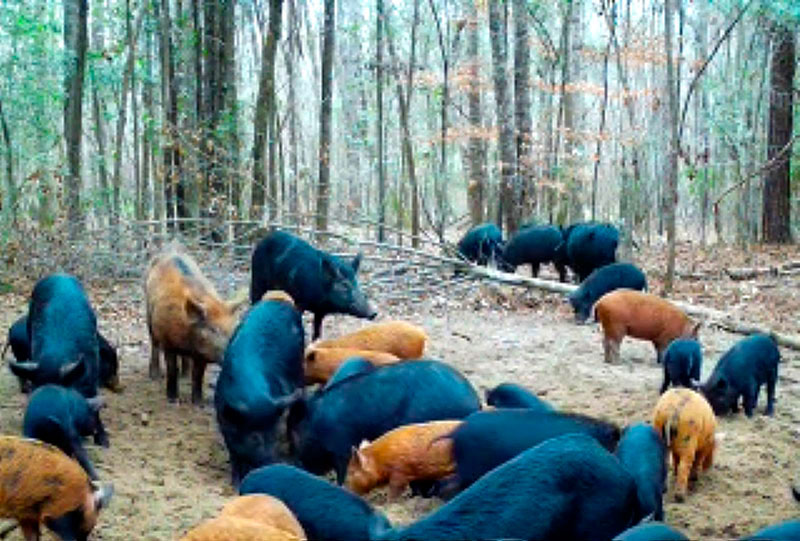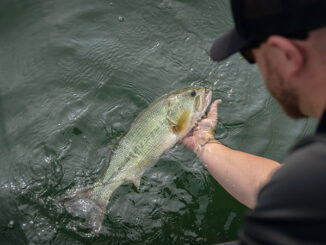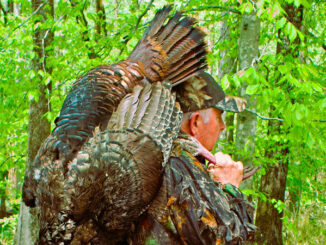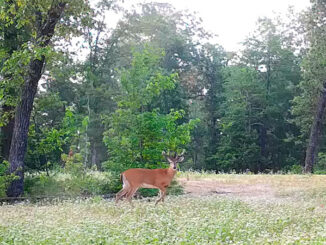
Hogs are fair game year-round
The deer and duck seasons are finally over, or close to it. For some, it has been a prosperous year in the deer stand or waist-deep in a flooded cypress swamp. And for some fortunate (and maybe unfortunate) landowners and hunters across the south, it’s time to pressure the feral hog population to get them in check.
The Spanish are responsible for swine introduction in the 1500s as a food source. And while some escaped captivity, more were introduced into the wild for hunting purposes. According to a 2022 report by the Natural Resources Conservation Service, the United States currently is home to more than 6 million feral hogs. And the Carolinas have nearly a half million individuals, with exceptional growth on the horizon.
Sure, the opportunity to add another big game animal to the target list may sound fun. And it surely can be, especially when they are the “other white meat.” Being able to shoot hogs 365 days a year with very few regulations on them can be enjoyable. And it can be a good way to spend the offseason in a tree stand.
But feral swine are far from a benefit to landowners. They can and will destroy the land in more ways than one. And for farmers, tree farmers, and hunters, they are the perfect storm.
Pigs live up to their reputation by “eating like pigs.” They will consume everything they can find with a calorie, and will leave a path of destruction behind. Hogs feed by sucking up what is on the ground surface and will go just beneath the surface with their snout. According to Texas A&M, hogs can detect food 5 miles away, and to a depth of 25 feet.
Hogs typically inhabit flood plains and areas with extensive water nearby. But they will travel great distances to conquer a solid food source, and will often stay there until the food dries up, or until they find another source. It doesn’t always have to be near water either. Hogs are nomadic and they will travel around in large groups to find food.
For deer hunters, bait piles and food plots have no chance when a herd of hogs moves in. While some deer, turkeys, and other wildlife will continue to feed some in these areas, the mature bucks will often shift to another place to avoid the hogs. Some say deer and hogs don’t compete much for food. But that couldn’t be further from the truth. When hogs find a corn pile or productive food plot, they will stay around until it is all gone.
Mix it up
Corn is one of the easiest baiting methods to get hogs into a feeding frenzy and right down the sights of an AR-15. Hogs love corn and anything else with a calorie. But hogs can and will set up on a corn pile and feast until it is completely gone. They will consume as much corn as a hunter can dump on the ground, and in short order.
But, hunters can keep hogs around and interested enough to keep coming around, all while using fewer, less expensive resources.
Hogs have excellent olfactory senses. They can smell food for miles, even when it’s buried. And hogs will go after food until they can’t sense anything is available any longer. Sometimes they will even keep coming when the food is gone, hoping more will come up, or that they can find a little more somewhere in the area.
Hunters can take advantage of a hog’s urgency to feed and their keen sense of smell by following a fool-proof method to keep hogs coming with a low level of hunter effort. Aside from corn, hogs also love anything with a sweet or strong aroma. And they will do anything to get to this bait concoction.
Mix together 50 to 100 pounds of shelled corn, a canister of Kool-Aid Drink mix (any flavor), two packages of flavored gelatin, 2 gallons of liquid Tropical Punch, and a 40-pound bag of swimming pool salt. After mixed, add it to a 5-gallon bucket and drill holes in the lower third of the bucket, and a couple in the bottom.
Pour it on
Put a lid on the bucket and drill a couple of dozen holes in the lid. This allows water to enter and percolate into the mixture. Hang the bucket from a tree at least 5 to 6 feet off the ground, and out of the reach of the hogs.
Now, dig a 12- to 16-inch hole with post-hole diggers about 3 to 4 feet deep. Pour the remaining mixture into the hole and cover it up with soil. Dig and fill several holes, all near the hanging 5-gallon bucket, with the mixture. Leave a small amount of the mixture on the surface.
Hogs will immediately begin to eat and excavate the ground. And the slowly dripping bucket of goodies above will keep them coming for months. The smell will permeate the woodlands and will draw hogs in from a long way off. And it will keep them there.
This concoction will last several weeks, if not longer, depending on how aggressive the hogs are. You can replenish the holes with more of the concoction if activity levels start to decline.
Hogs are more of a curse than a prize. But hunters can surely take advantage of the winter months when food resources are limited, concentrating hogs around food sources. It’s a great time for hunters to help reduce the hog population.

Hogs reproduce very quickly and very often. Take advantage of February’s conditions to kill some off and to stock the freezer with some tasty meat.
Populations of hogs are exploding:
Because hogs reproduce very often and very rapidly, it’s tough to keep their population in check. Giving them an easy food source is a great way to concentrate them into small areas where hunters can have a field day.





Be the first to comment